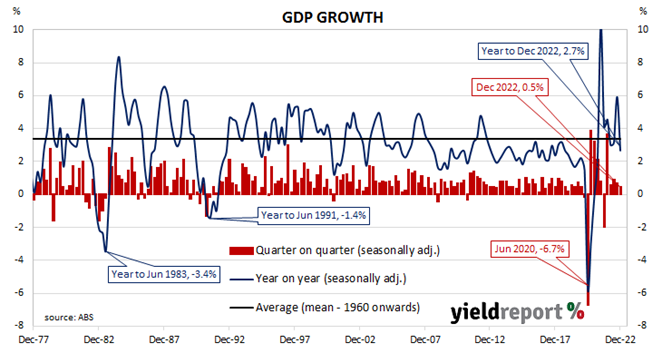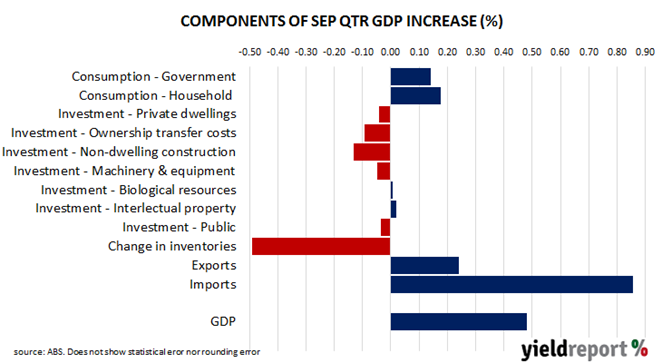Summary: Australia’s GDP up 0.5% in December quarter, less than expected; economy slowing, weighted down by higher prices, interest rates; fewer imports, slower inventory growth the major influences; pressure on household sector through lower real wages.
Since the “recession we had to have” as the recession of 1990/91 became known, Australia’s GDP growth has been consistently positive, with only the odd negative quarter here and there. However, Australia’s first recession in nearly thirty years was inevitable in 2020 once governments introduced restrictions which shut businesses and limited people’s movements for an extended period of time. Growth rates have been positive since then, although the September 2021 quarter proved to be the exception after restrictions were reintroduced in eastern states.
The latest figures released by the ABS indicate GDP rose by 0.5% in the December quarter. The increase was less than the 0.7% rise which had been generally expected as well as the September quarter’s 0.7%. On an annual basis, GDP expanded by 2.7%, down from 5.9% in the September quarter.
“Today’s report suggests the economy is slowing under the weight of higher prices and interest rates, with consumer spending recording outright falls in two states,” said ANZ senior economist Felicity Emmett. “Inflationary pressures, while past the peak, remain strong.”
Commonwealth Government bond yields fell substantially on the day. By the close of business, the 3-year ACGB yield had shed 9bps to 3.52%, the 10-year yield had lost 7bps to 3.79% while the 20-year yield finished 3bps lower at 4.14%.
In the cash futures market, expectations regarding future rate rises softened. At the end of the day, contracts implied the cash rate would rise from the current rate of 3.32% to average 3.495% in March and then increase to an average of 3.885% in May. August contracts implied a 4.145% average cash while November contracts implied 4.17%.
Westpac Chief Economist Bill Evans generally agreed with ANZ’s Emmett but added, “wage pressures are easing, exerting even more pressure on the household sector through persistent falls in real wages.” He also noted weakness in the construction sector and slowing equipment investment in the business sector in general.
Spending on imports decreased by $4.7 billion, contributing 0.86 percentage points to the quarter’s overall result, while a $1.3 billion rise in exports contributed 0.24 percentage points. Slower inventory growth subtracted 0.49 percentage points.



